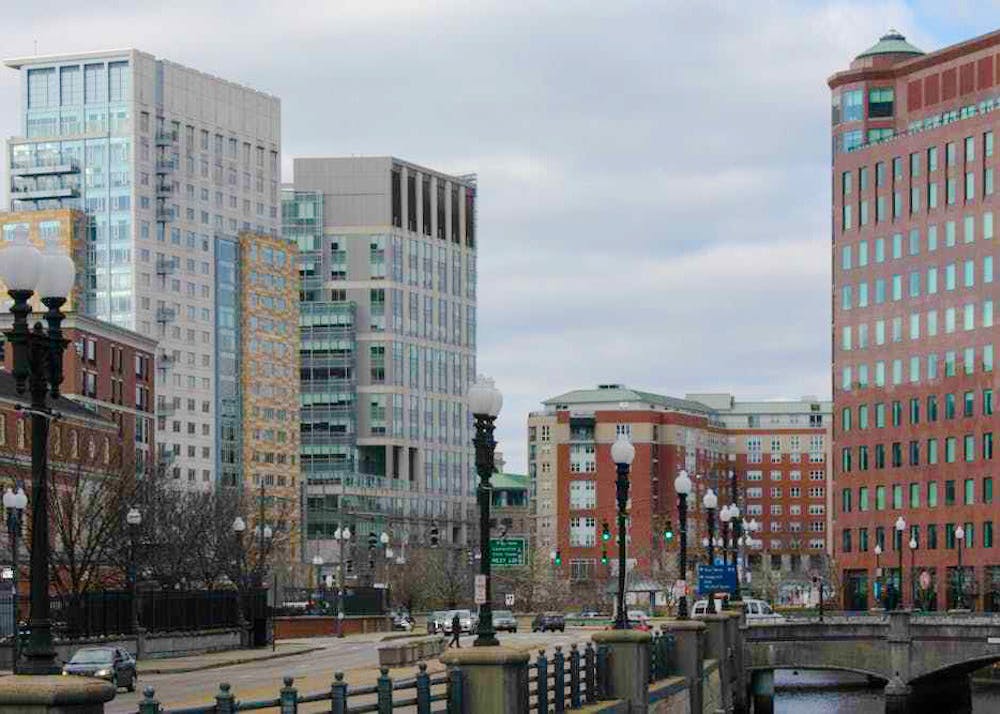On Sept. 1, Rhode Island introduced its latest environmental initiative: Clean Heat RI, a heat pump incentive program administered by the state’s Office of Energy Resources.
Incentives to replace fossil fuel heating with heat pumps — electric heating and cooling devices that can pull hot air in and out of a house — are available for all homeowners, as well as small- and medium-sized businesses and nonprofits. The program also covers the full cost of installing heat pumps for “income-qualifying customers” so long as they replace oil or propane heating, according to the OER website.
Heat pumps offer a host of benefits, including decreased environmental burden and customer costs, greater longevity and quicker heating and cooling, wrote Danielle Jameson, climate change programs and policy manager at the OER, in an email to The Herald.
In June 2022, the Rhode Island General Assembly approved a $25 million budget for Clean Heat R.I. through funding from the American Rescue Plan Act, Acting Energy Commissioner Christopher Kearns wrote in an email to The Herald. To maximize use of the funds, which will be available through June 2026, the program will be doing “a lot of outreach and targeting,” Kearns added.
Non-income-qualifying credits for installing heat pumps will likely land between $2,500-$3,500, according to the program’s website.
In September, Clean Heat Rhode Island’s first month, 17 applicants submitted an invoice for a completed installment of a heat pump. OER will “process those and then issue the rebates,” Jameson wrote.
Rebate amounts vary based on the customer’s income level: “Income-eligible customers on energy assistance programs or SNAP food assistance programs” will have “100% of the installation” covered, Kearns said in an interview with The Herald.
April Brown, interim director of the Racial & Environmental Justice Committee of Providence, noted the challenge of a government program successfully operating a program targeted at lower-income households. “People at the top don't have relationships with the people who are most affected by these incentives,” she said.
“It still ends up being that the people who least deserve to have the incentives have the incentives,” April Brown said. “The people who go to community meetings and go to council meetings and go to General Assembly convenings. But not the folks who really need it because they're working very hard to get food on their table and put their kids in school.”
A targeted outreach strategy for income-eligible customers is still in the “development phase,” Jameson wrote. OER is currently working with a “consultant who specializes in outreach to disadvantaged communities and energy justice and equity” to create this strategy.
April Brown pointed to organizations like the People’s Port Authority, Roots 2 Empower, Movement Education Outdoors and the George Wiley Center as groups that have relationships with the program’s income-eligible customers.
Government needs to access those relationships, April Brown said, “so that they can really find out where the money should go.”
Other barriers to program access also include language barriers, according to Chris Gaynor, climate justice specialist with the Rhode Island Department of Environmental Management.
“You can have the perfect outreach by plan, and if no one can read it, it doesn't matter,” Gaynor told The Herald. OER has translated the program’s website into Spanish and Portuguese in order to reach Spanish-speaking, Cape Verdean, Brazilian Portuguese and Haitian Creole populations, among others, he explained.
Gaynor also emphasized the importance of educating landlords about the opportunity. Previously, Gaynor lived in Vermont, and as a renter, paid almost $600 every month in the winter for heating.
It was only after an unexpected repair that Gaynor’s landlord was made aware of a heat pump program where everyone won — Gaynor, his landlord and the environment at large, Gaynor said.
“Rhode Island has a very high renter population who do not have autonomy or control over the energy costs,” Gaynor noted.
Besides its potential to significantly reduce the state’s carbon emissions, Clean Heat RI will relieve one “specific burden” for Rhode Islanders — increasing a “general availability of finances for someone to take care of themselves or their families,” Gaynor said.
Rhode Island’s 2019 Greenhouse Gas Emissions Inventory shows that residential heating accounted for just over 19% of emissions in 2019 — “ so having a heat pump program is certainly going to go a long way in reducing our emissions,” Kearns said.
Injy El-Dib is a metro staff writer at The Brown Daily Herald. She has previously covered activism and public health in the Providence area. In her free time, Injy enjoys playing volleyball and crocheting stuffed animals.





